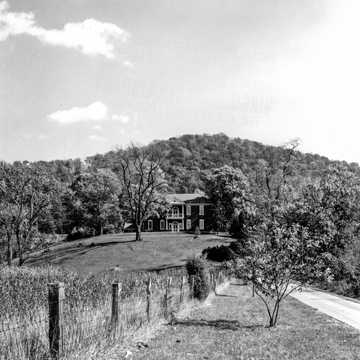George Hancock purchased considerable holdings in the broad bottomlands of the South Fork of the Roanoke River. A colonel in the American Revolution, he also served in both the state and national legislatures. His brick, two-story Federal house overlooking his farm was built as a three-bay, hall-parlor plan with a large one-bay, two-story entrance porch. In the 1950s, two matching bays were added, which gave the house a symmetrical facade. Fotheringay's elaborate interior woodwork is taken from the pattern books of English architect William Pain, the most popular source for interior decoration in fashionable Virginia residences in the early nineteenth century. A small mausoleum on the hillside above the house is the source of a persistent, though unfounded, local legend that a mid-nineteenth-century owner, Colonel Edmundson, was buried there, standing upright, to keep watch on his slaves from the grave.
You are here
Fotheringay
If SAH Archipedia has been useful to you, please consider supporting it.
SAH Archipedia tells the story of the United States through its buildings, landscapes, and cities. This freely available resource empowers the public with authoritative knowledge that deepens their understanding and appreciation of the built environment. But the Society of Architectural Historians, which created SAH Archipedia with University of Virginia Press, needs your support to maintain the high-caliber research, writing, photography, cartography, editing, design, and programming that make SAH Archipedia a trusted online resource available to all who value the history of place, heritage tourism, and learning.


